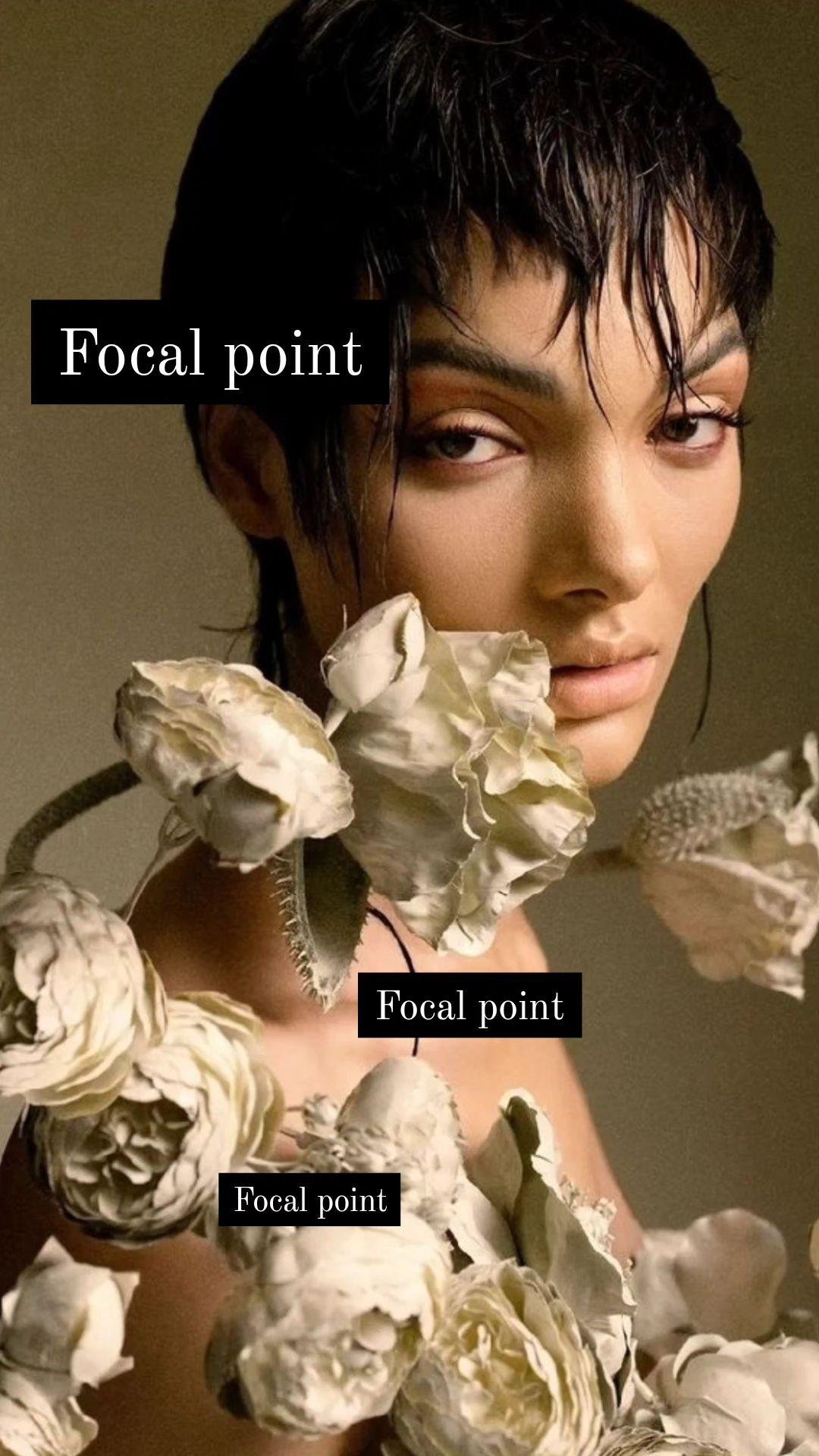Focal Points in Design
A focal point in design work ensures your design has a place that demands the attention of the viewer which you can then guide the viewer around using the principles of design.
A focal point is the part of design that first attracts the viewer’s attention. The focal point is usually the brightest, largest, or most detailed area of the design.
Creating a focal point in your design is important because it ensures that the viewer will look at the design in the way that you want them to. Without a focal point, the viewer’s eye may wander all over the design, and they may not be able to appreciate all of the elements that you have included.
The focal point is an element of design versus a design principle.
The focal point is the part of the design that first attracts attention and holds it. The focal point can be created by using a variety of elements such as color, line, shape, size, value, texture, and form.
Why is focal point in design important?
Focal point in design is important because it gives your work direction and focus. Without a focal point, your work may feel scattered or unfinished.
A focal point also helps to engage viewers and guide their eyes around your work. When done correctly, a focal point can make your work more impactful and memorable.
The focal point should be simple so that viewers can understand what they are looking at, too much detail in the focal point can be confusing and overwhelming.
The focal point should be large enough to draw the viewer’s attention but not so large that it dominates your work.
Creating a focal point is an important part of your work but it is also important to remember that the focal point is not the only important element in design work.
A well-balanced design will have a harmonious composition with all of the elements working together to create a cohesive imag
How to create a focal point in design work
There are several ways to create a focal point in your work but there are a few things to keep in mind when you are creating a focal point:
Make sure that the focal point is well-defined and stands out from the rest of your work. You can achieve this by using contrasting colors, values, and/or textures. You can also do this by making the focal point larger than the rest of your work’s subject matter.
Use color: Color can also be used to create a focal point. You can even create a focal point in your work by removing color from the focal area.
Use values: Values are the different shades of darkness and lightness in design work. You can use values to create a focal point by making the focal area lighter or darker than the surrounding areas.
Use texture: Texture can also be used to create a focal point. By making the focal area more textured than the rest of your work, you will make it stand out and draw attention to it.
High contrast means that there is a big difference between the lightest and darkest areas of the design.
Low contrast means that the lightest and darkest areas are closer in value.
You can use contrast to create a focal point by making one area of the design much lighter or darker than the rest.
How to test your focal point
Once you’ve created your focal point, step back and take a look at your design from a distance. Does your eye go directly to the focal point?
If not, try making it more pronounced by increasing the contrast or adding more texture or color.
You can also try moving the focal point to a different area of the design.
Remember, the focal point should be the most interesting part of the design, so make sure it stands out and make sure that if you want the viewer to look at other parts of the design you create smaller focal points.
What makes a good focal point in design?
A good focal point should be an area of the design that is most interesting or visually appealing. It should be an area that stands out from the rest of the design, and that viewers will be drawn to.
The focal point may be placed in the center of the design, or off to one side. It should feel natural and not forced. If you feel your eyes are fighting the urge to look at the focal point then something is not working in your design, there may be another element working against it.
A good focal point should be simple, and not too busy or complex.







